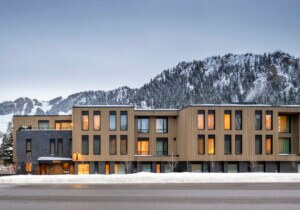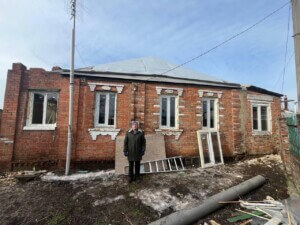Avant-Garde as Method: Vkhutemas and the Pedagogy of Space, 1920–1930
Anna Bokov
Published by Park Books
MSRP $65
Just over a hundred years ago, the Higher Art and Technical Studios (Vkhutemas) opened its doors in Moscow. Often referred to as “the Soviet Bauhaus,” the school was both larger and more diverse than its German counterpart. Yet Vkhutemas has received much less attention in Anglophone media, largely owing to the outsized influence of Mies and Gropius, the most famous of the Bauhauslers, in the United States. The Bauhaus centennial in 2019 occasioned a series of glowing retrospectives: some in architectural publications, others in the mainstream press, even one in a left-wing magazine. Vkhutemas, by contrast, has so far garnered only a single article looking back at its achievements over the brief decade it managed to remain in existence.
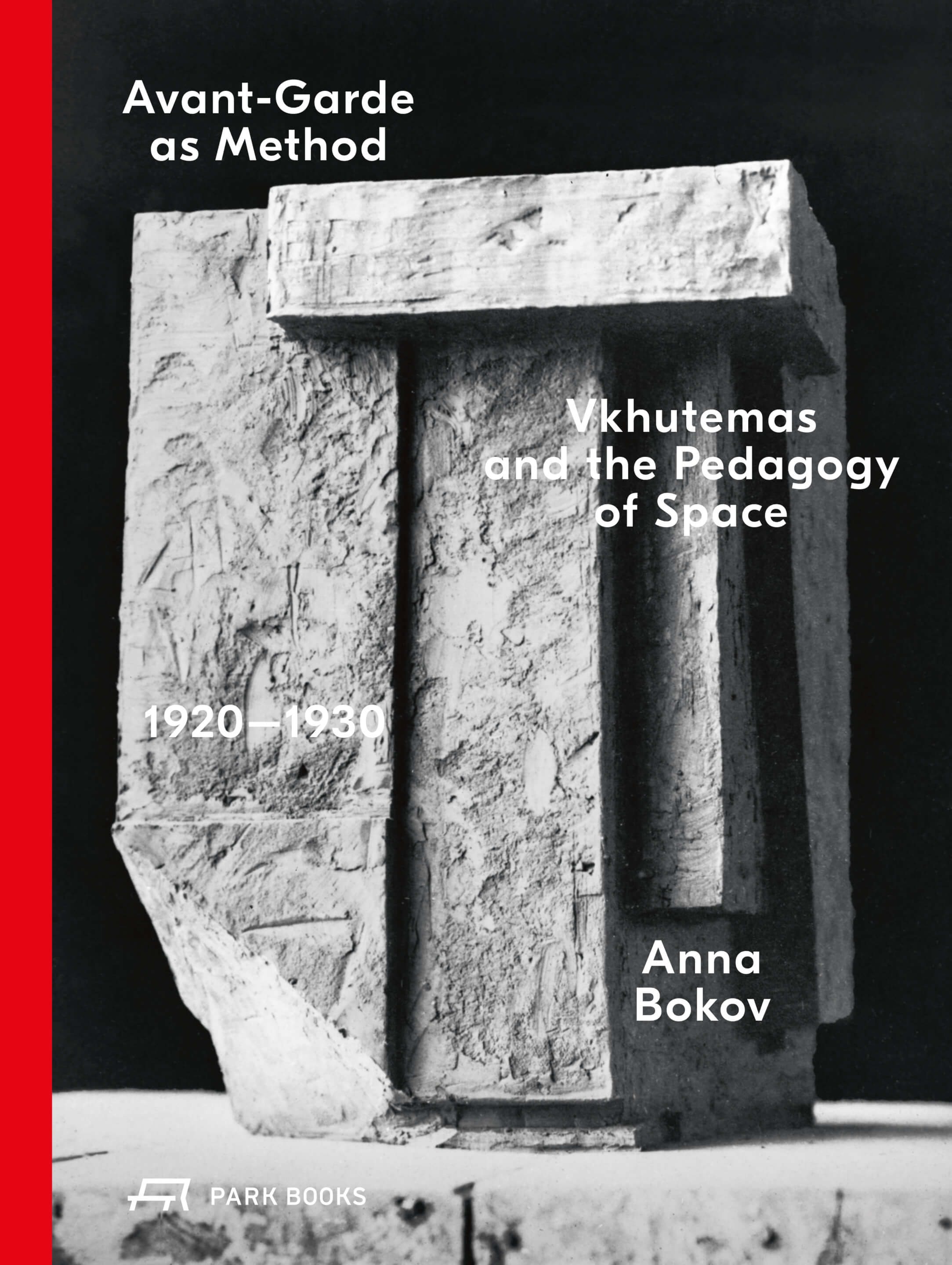
Part of this lack of recognition is perhaps due to the dearth of scholarly literature on the subject. Numerous books have been written about Soviet modernism in art and architecture, of course, but none have focused specifically on the place where so much of this movement came into being. Hugh Hudson devoted a chapter to it in his rather sensationalized 1994 account in Blueprints and Blood, but little else can be found apart from the odd mention here and there. Anna Bokov’s Avant-Garde as Method: Vkhutemas and the Pedagogy of Space, released last November, goes a long way toward correcting this deficit. It is to date the only book-length study of the Moscow school available in English. Even more so, as the title suggests, it is the first serious inquiry into the Soviet avant-garde’s unique approach to educating young artists and architects.
Gorgeously illustrated, with more than a thousand images (the vast majority of them in color), the book is split into four chapters following an introduction and a pair of forewords. Bokov begins by setting the stage for Vkhutemas’s foundation against the revolutionary backdrop and education reforms of 1918. Many of its earliest students were from working-class or peasant backgrounds, and a number had served in the bloody civil war against the forces of counterrevolution. Rabfaks, or workers’ faculties, were set up to train those who missed out on the chance to earn secondary degrees during these years. Quotas limiting non-Russian minorities were abolished, and tuition for poorer applicants defrayed. These initiatives had the desired effect, at least within the halls of Vkhutemas; not long after its founding, the school had made considerable gains toward democratizing its enrollment. Bokov breaks down the class composition of the 1929 student body: “24% workers, 20.6% peasants, 35.7% white-collar workers, and 19.7% intelligentsia.”
She also outlines the institutional prehistory of the school, starting with the Free State Art Studios (Svomas) established in urban centers across the USSR shortly after the October Revolution. In the fall of 1920, the Moscow branch of Svomas merged the city’s disbanded School of Painting, Sculpture, and Architecture with the Stroganov Academy of Applied Arts, consolidating itself as Vkhutemas. Other educational networks, some even with state support, were also established around this time. A few months earlier, Wassily Kandinsky—who would go on to teach at the Bauhaus—founded Inkhuk, or the Institute of Artistic Culture. Zhivskulptarkh, a collective of modernist painters, sculptors, and architects that included multiple future Vkhutemas professors, had already formed in 1919. Kandinsky was eventually forced out by members of the more left-wing Working Group of Objective Analysis, several of whom belonged to Zhivskulptarkh.
For Bokov, the theoretical debates among these artists and architects regarding the distinction between “construction” (konstruktsiia) and “composition” (kompozitsiia) were decisive to the pedagogical practices later implemented at Vkhutemas. By the former term, they generally meant the organization of dynamic elements, whereas the latter signified the mere arrangement of static parts. Maria Gough has given an exhaustive treatment of this dichotomy in her 2005 book The Artist as Producer, but Bokov traces its educative effects. Georgy Krutikov, one of Vkhutemas’s star pupils, would move away from spatial compositions to combinatorial problematics in architecture, while sculptural and graphical constructions would prove central to the laboratory class. Everywhere the constructivists’ goal (tsel’) was to eliminate anything arbitrary, fanciful, or accidental from the finished product.
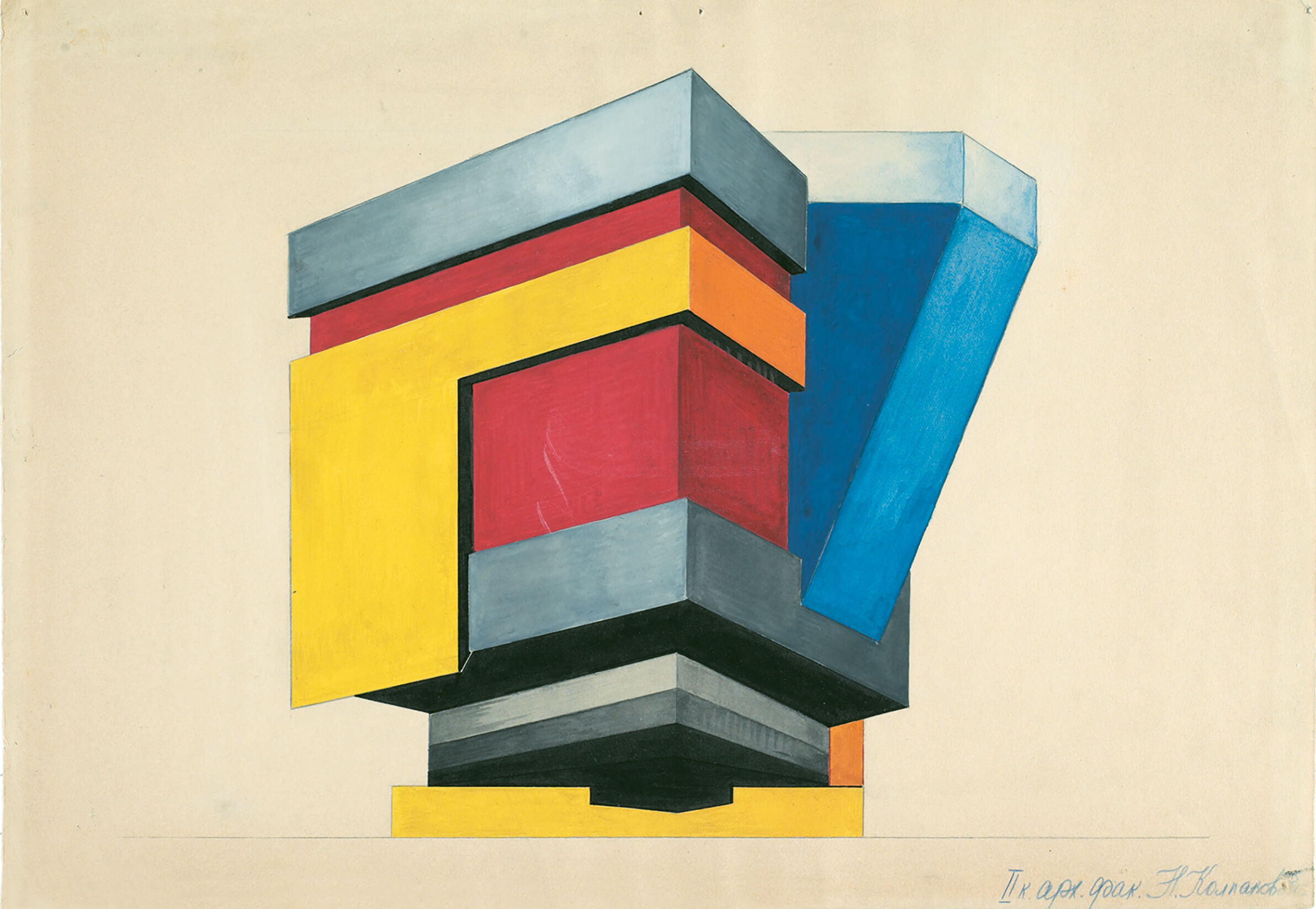
At any rate, the school’s core curriculum was made up of the four elementary disciplines devised by fragments of the aforementioned Working Group of Objective Analysis: color, volume, graphics, and space. Lyubov Popova and Aleksandr Vesnin came up with the syllabus for color; Boris Korolev, Aleksei Babichev, and Anton Lavinsky handled volume; Aleksandr Rodchenko and Varvara Stepanova designed the graphics workshop; Nikolai Ladovsky, Vladimir Krinsky, and Nikolai Dokuchaev formulated the program for space. The famed Vkhutemas preparatory course is reconstructed by Bokov in meticulous detail, with its thematic units (kontsentry). In the second half of the book, she goes over some measures these figures introduced. Quite originally, students in the space class were instructed to model in clay without sketching anything first. One advantage of this was “the a priori formlessness” of the medium, which allowed form to be expressed directly.
Chapter 2 covers the various theories that informed Vkhutemas’s groundbreaking methodology. Bokov demonstrates that the professors at the school were widely read in the leading discourses of their day, be they art history (Wölfflin and Hildebrand), physics (Mach), or scientific management (Taylor, Münsterberg, and psychotechnics). El Lissitzky, a world-historic talent who acted as Soviet modernism’s emissary during his travels to the West, shifted from planimetric to imaginary space by citing the mathematical ideas of Gauss, Lobachevsky, and Riemann. Wölfflin’s notion of Formkraft as the inner force driving all matter to acquire shape influenced Ladovsky, suggests Bokov. Hildebrand’s writings about experience and perception likewise left a mark, anticipating the rationalist emphasis on the kinesthetic articulation of form. Machism and Taylorism inspired the avant-garde insofar as they both stressed the importance of energy, economy, and efficiency.
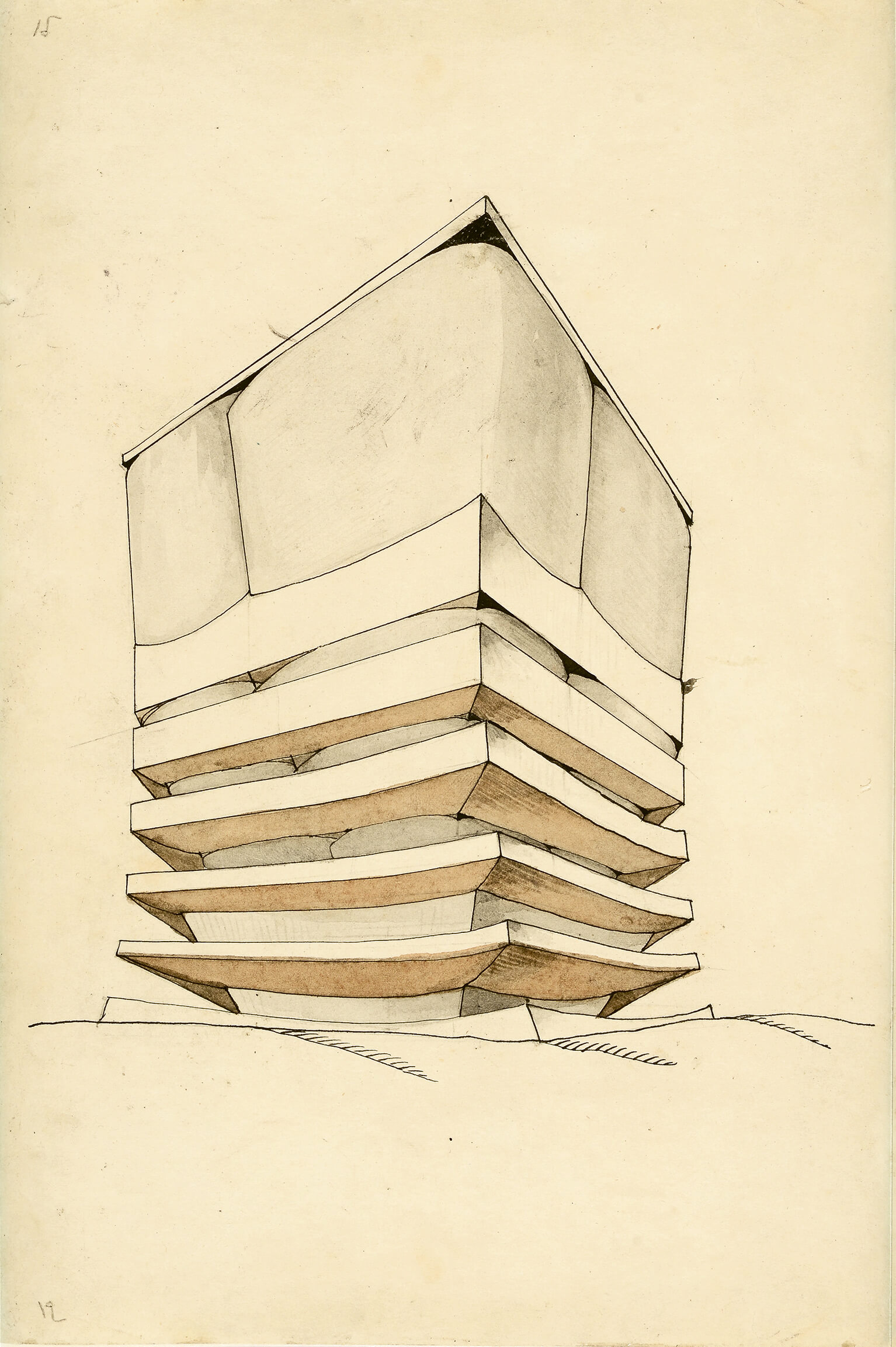
Ladovsky emerges here as one of the two main protagonists of Avant-Garde as Method. Given the widespread neglect of his contributions to architectural education, this is a welcome development. The father of “rationalism,” a tendency less stridently utilitarian than constructivism, Ladovsky instead emphasized the rationality of certain perceptual laws. More has been written about the constructivist Organization of Contemporary Architects (OSA), led by Moisei Ginzburg and the Vesnin brothers, than Ladovsky’s rationalist Association of New Architects (ASNOVA). Krinsky, Dokuchaev, and Ladovsky taught the basic classes at Vkhutemas, while Ginzburg and the Vesnins taught the advanced ones. “Despite their antagonistic rhetoric in the professional arena, the rival camps were more complementary than contradictory,” Bokov explains. “Students would find themselves in the polemical crossfire, yet the formal solutions were often quite similar.” Ultimately, though she defends many of Ladovsky’s innovations—his psychotechnical lab, for example, aimed to gauge the aptitude of aspiring architects in terms of their responses to specialized questionnaires—Bokov concedes that the rationalists failed to turn his idiosyncratic pedagogy into an exact science.
Rodchenko, a much more familiar figure in the history of modernism, is the other hero of the book. His reputation as a photographer, graphic designer, and painter has eclipsed his role as an educator, Bokov argues. At Vkhutemas, Rodchenko’s greatest legacy was the so-called initiative (initsiativa), a battery of exercises that formed the centerpiece of the graphics course, in which three sets of assignments built upon one another, each increasing in complexity. First, students made compositions on a flat rectangular surface out of geometric shapes such as circles, triangles, and squares. Next, lines were added as components of the mix alongside rhomboid or elliptical frames. Once these two steps had been accomplished, the project moved into the third dimension with the addition of depth. Bokov has unearthed the portfolio of Anastasia Akhtyrko, an assistant to Rodchenko, to showcase the interplay of materials and their arrangement (or “scheme”).
In the final chapter of Avant-Garde as Method Bokov explores the concept of “total design,” by which she means the fashioning of everything from individual pieces of furniture to entire cities. Everyday life (byt’) had to be rebuilt from the ground up, in accordance with Bolshevik doctrine. Patterns for workers’ uniforms, production clothing or прозодежда, were developed in Stepanova’s textiles course. She intended such clothes “to be lived in, rather than worn merely for a specific activity,” as Bokov puts it. Vladimir Mayakovsky’s sister Lyudmila was responsible for a prizewinning fabrics entry at the 1925 Paris Exhibition. Chairs, tables, dressers, cabinets, tea sets, and lamps were also part of this effort to craft quotidian objects for the new reality. Many such objects were produced in Metfak, the metalworking department run by Rodchenko. Gustav Klutsis, a one-time Vkhutemas student-turned-professor, designed memorable propaganda posters as well as colorful installations along with his wife, Valentina Kulagina.
Urbanism was the highest expression of this drive toward total design, though, and here again Bokov spends some time looking at the rationalists. Ladovsky’s plan for a parabolic reconstruction of Moscow, usually overshadowed by the urbanist-disurbanist controversy within OSA, gets a couple pages. Expanding northwest from the historical city center, Ladovsky split the difference between concentric and linear models for growth. Residential neighborhoods were to be wrapped by an industrial ribbon buffered by lush green zones. Yet city planning at Vkhutemas was not confined to pragmatic proposals, as more speculative designs were also encouraged. Krutikov imagined the possibility of a flying city for his 1928 diploma project, replete with towers anchored to dirigibles. Fellow student Lazar Khidekel similarly painted suprematist cityscapes, where planar constructions floated freely above the terrain. Within these proposed cities, new building typologies were conceived: workers’ clubs, collective housing facilities, sanatoriums, and monumental structures.
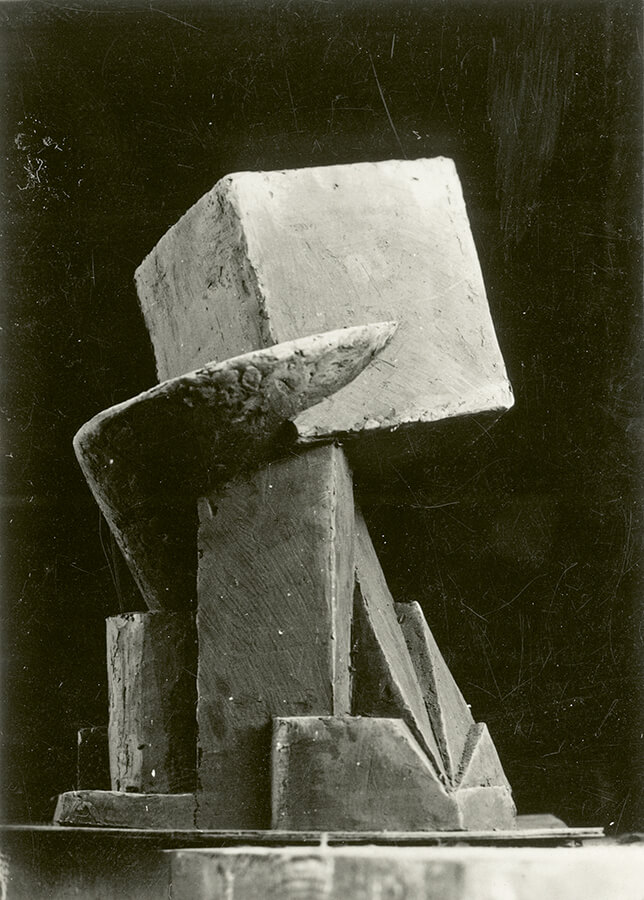
The repeated references to the Bauhaus, constantly comparing their curricula and instructional styles, may well be unavoidable. Kenneth Frampton underscores the irony of the comparison in his foreword, since “large parts of the Weimar and Dessau Bauhaus teachings in graphics, furniture design, and even in architecture had their origins at Vkhutemas.” Bokov catalogs the myriad exchanges that took place over the years between the two schools, charted along a time line. Personnel from each regularly traveled back and forth. A delegation of Vkhutemas representatives arrived at the iconic Dessau building for a brief stay in 1926, followed by a team of architects and engineers in 1927. Gunta Stölzl, Arieh Sharon, and Peer Bücking returned the favor a year later, and the master colorist Hinnerk Scheper got a job at Vkhutein (as it was renamed in 1929) after moving with his wife to Moscow. Lissitzky and his old teacher Kazimir Malevich also made visits to the Bauhaus. Significant methodological divergences existed as well; Frampton notes the schools’ opposite orientation toward craftsmanship, particularly in the Bauhaus’s Weimar phase.
Even leaving aside the beautiful illustrations and Bokov’s impressive scholarship, Avant-Garde as Method is valuable for the access it provides to primary sources. Interspersed throughout the text are translations of assorted dossiers, newspaper articles, exhibition catalogues, lesson plans, and other materials from Russian, none of which have appeared in any prior publications. Highlights include the pamphlet Art in Life (Iskusstvo v bytu) from 1925, the brochure for Konstantin Melnikov’s pavilion in Paris, and a 1929 overview of the various departments’ activities. Next to assignments for the graphics and space courses are digitally reproduced axonometric projections by Bokov herself, which serve to visualize the tasks students were being asked to perform. Sketches often accompanied the original manuscripts—plans, sections, elevations—but these renderings are a helpful addition. For nonspecialists, these documents grant a window into the rich discourse of Soviet modernism.
Bokov has thus written a book that fills in a major lacuna in the history of modern art and architecture, particularly in the field of education. While the Bauhaus is rightly acknowledged as a central hub of avant-garde aesthetics in the 20th century, Vkhutemas has for too long been relegated to the margins. The Stalinization of the cultural realm led to the shuttering of the campus in 1930, as its comprehensive program was deemed inefficient. Vkhutein was broken up into six separate institutions with greater specialization. Much like the Bauhaus shortly thereafter, it fell victim to the conservative tastes of an authoritarian regime. Unlike the German school, however, Vkhutemas would have to wait 90 years to be properly appreciated. Aleksandr Lavrentiev, the grandson of Rodchenko and Stepanova, summarizes Bokov’s accomplishment well: “[she] reframes the major propaedeutic courses of the Russian avant-garde as a universal artistic system.”
Ross Wolfe is a critic, historian, and educator living in New York City.
AN uses affiliate links. If you purchase something through such a link, we may receive a commission.








